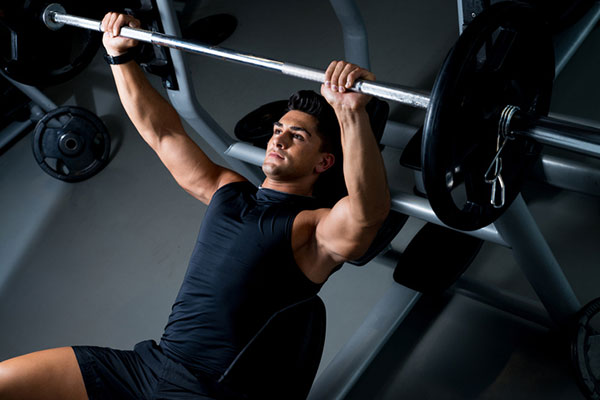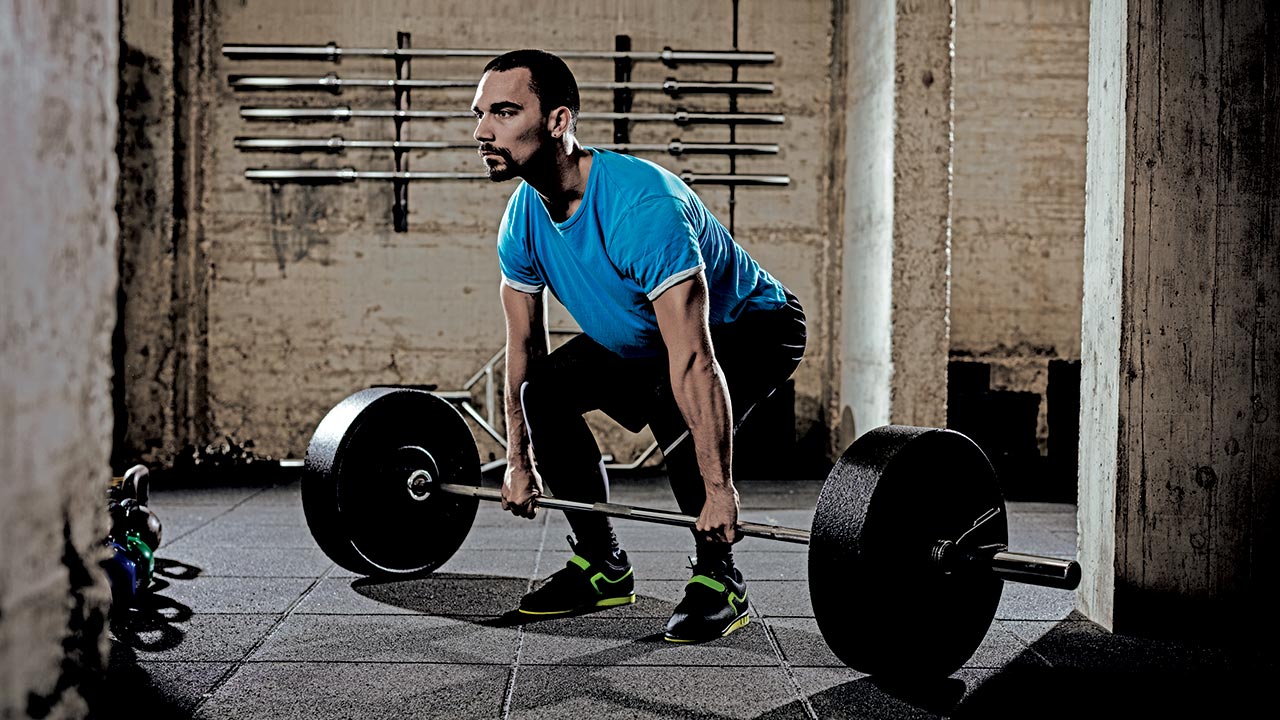If you’re weak in specific ranges of movement in certain exercises, then you’re likely some leaving gains at the door. Gain more strength, burn more fat and build extra muscle by improving your weak ranges of movement in key exercises.
EXPERT
CJ McFarland is the Head Strength and Conditioning coach for Onnit Academy Gym who has trained athletes from the NFL, CFL and WWE
Why being strong in a full range of motion matters
1. You can go heavy every week
Training heavy with your big lifts can be one of the most effective practices if properly executed.
For people with an ectomorph or mesomorph body type, training with loads between 90 and 95 percent is optimal for gaining strength and putting on size.
However, this can often lead to overtraining or injuries. Your body can adapt to training within a two to four-week period.
If you intend to extend this duration of training heavy, you will need to alter your training, which can be done by changing the ranges of motion.

2. Your injury risk decreases when you’re strong in a full range
For endomorphs, training in the 10-20 rep range is the best for decreasing body fat.
However, when doing this much volume you can become more injury prone. It’s best to do four sets all at different joint angles.
For example, do one set of squats to 90-degrees of knee flexion, a second set to 80-degrees, a third to 70-degrees, and the fourth to 60-degrees. This allows you to maintain safe joints and keep your muscle tissue healthy.
3. Strength increases dramatically when you lift through a full ROM
When maxing out, most people hit a wall at certain joint angles (i.e. when bench pressing it is either when the bar is on the chest or half-way up).
From this, you can assume strength at the joint angle is low or most often weaker than other joint angles in the lift.
For this, we implement concentric-only movements that start at or below the failing point.
Exercises to increase strength through a full range of motion
The following variations are partial ranges of motion and require concentric movement, which means you will have little delayed muscle soreness.
While setting up for the start, you are duplicating your body mechanics as they appear during a full range of motion lift.
For the following variations, start by setting up the safety pins on the rack at your desired height.
If multiple reps are performed, don’t bounce the bar on the pins, and let the bar settle before the next rep.
IMPROVE THE BENCH PRESS
Bench press from the pins
Lay flat on the bench and roll the bar down so it is equal to your chest or a little lower.
Squeeze your shoulder blades together, take in a deep breath, and press the bar up.
Once the bar is locked out, return it back to the start position.
IMPROVE YOUR SQUATS

Squat from the pins
Set your feet underneath the bar and rest it on your back. Take a deep breath and stand up from your squat position.
Once you have the squat locked out, return it back to the safety pins.
It is important the bar is in line with the middle of your feet at the beginning of the lift.
If your feet are behind the bar you will fall forward when standing up. If your feet are too far in front, you’ll fall backwards.
STRENGTHEN YOUR DEADLIFTS
Rack pulls
Placing your feet underneath the bar and pull the barbell to your shins.
Take in a deep diaphragmatic breath, pull your shoulders back and down, and stand up.
Once you’ve locked out the deadlift, return the bar to the pins.
It is important the bar stays as close to your body as possible as this will reduce the risk of injury to your lower back.
How to improve both ends of the partial range
The following training variations allow you to train both the eccentric and the concentric.
This will be the most transferable to your lifts, as it will allow you to break down muscle fibers to become bigger and stronger.
BENCH PRESSING
Board press
This is done with a piece of wood (typically a 2×6 and about 15″ in length) Have a partner put the board on your chest.
After un-racking the bar, lower it down to the board, then press back up.
Using a board allows you to change the range of motion significantly to the point where it can be little chest recruitment to only working the triceps.
Floor press
Set up as you would for a regular barbell bench press, but with your back on the floor.
Pausing on the floor eliminates all benefit of the stretch reflex and forces you to control the weight better.
SQUATTING
Box squat
By placing a box underneath you, you can set a specific distance to squat to as well as ensure all repetitions are done to the same depth.
As you descend into the squat, slowly touch the box with your glutes, being sure not to relax the muscles, and then rise back up.
Do not fall to the box and use it as a rebound tool as this will put you into faulty positions and may result in injury.
For more content about improving your weak ranges of movement, nutrition tips, and training advice, get TRAIN magazine direct into your inbox every month for free by signing up to our newsletter







